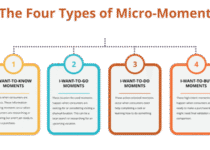Why Real-Time Inventory Intelligence is Your Secret Weapon During Tariff Turbulence
With tariff uncertainty creating unprecedented market dynamics, dealers face a critical challenge: understanding exactly where to focus their inventory acquisition and marketing efforts to maximize profitability.
Our May 2025 Market Pulse report reveals the impact of these market shifts: vehicle movement continues to rise while available inventory is declining nationwide. For dealerships, these conditions create both challenges and opportunities.
The key to navigating this complexity? Knowing the precise positions of supply and demand at a model or even trim level in the market around you—and having this intelligence in real time. This granular market visibility is no longer a luxury but a necessity for dealerships looking to maintain a competitive advantage during industry-wide disruption.
How Volkswagen’s Inventory Shift Reveals Broader Market Opportunity
Recent data from MarketAI for Volkswagen reveals a fascinating shift that exemplifies challenges facing many dealers across all brands. Looking at new inventory trends between January 2025 and April 2025, our data shows a dramatic reduction in Tiguan availability, with inventory plummeting from approximately 23,000 units to just 3,600 units nationwide. Meanwhile, the Atlas—Volkswagen’s most expensive model at a price point of approximately $47,000—has become the dominant model in their lineup.

The interesting aspect of this shift isn’t direct price increases on individual models, which have been relatively modest. Rather, the significant change is in the mix of available inventory. With Tiguans (priced around $34,000) becoming scarce and the higher-priced Atlas (nearly $47,000) becoming predominant, the brand’s average vehicle price has increased substantially—not because of price hikes on individual models, but because of inventory composition shifts.
This pattern isn’t unique to Volkswagen—similar inventory mix shifts are occurring across manufacturers as they respond to tariff pressures, supply chain disruptions, and shifting consumer demand. The question is: how can dealers turn this market volatility into competitive advantage?
Certified Pre-owned: The Hidden Opportunity in Market Disruption
While new Tiguan inventory has decreased dramatically, MarketAI shows that certified pre-owned (CPO) Tiguans present a much more stable inventory picture during the same January-April 2025 period. CPO pricing has also remained more moderate, with prices increasing from $24,600 to $25,500—just a $900 increase compared to the more significant shift in new vehicle availability.
Used Tiguan inventory has also shown more stability than new, with a modest decline from approximately 10,000 to 9,000 units nationwide during this three-month window.
This disparity creates a strategic opportunity for dealers who understand the complete market picture. If you’re facing shortages of popular new models while customer demand remains strong, highlighting your certified and used inventory becomes increasingly important. CPO vehicles, in particular, offer an attractive middle ground:
- They provide the reassurance of manufacturer certification and warranty coverage
- They’re available at a more accessible price point than new vehicles
- They’re generally not subject to the same tariff and supply chain disruptions affecting new inventory
- They appeal to financially careful consumers who still want quality and peace of mind
What’s most important is that this principle applies across all manufacturers—not just Volkswagen. The ability to see these cross-category opportunities in real time is what separates thriving dealerships from those merely surviving.
Transforming Market Uncertainty into Competitive Advantage
Today’s automotive market presents both challenges and opportunities. With movement increasing 2% while inventory decreases 6%, we’re firmly in a seller’s market—but one that requires strategic thinking and real-time intelligence to navigate successfully.
Dealers with comprehensive market visibility can:
- Identify inventory gaps and opportunities: Knowing that specific models like the Volkswagon Tiguan have decreased by over 84% in new inventory while demand remains strong signals opportunities to promote certified and used alternatives more aggressively.
- Adjust marketing messaging strategically: Rather than focusing solely on new vehicle offers that might be constrained by inventory limitations, highlight the value proposition of certified vehicles that can meet customer needs at accessible price points.
- Align inventory acquisition with real-time demand: If certain models are experiencing supply constraints in the new market, prioritize acquiring those models for your used and certified inventory.
- Out-position competitors with real-time market knowledge: In a market where competitors are facing the same inventory constraints, being the dealer with the best selection in high-demand categories gives you a decided edge.
The Volkswagen example illustrates how complex today’s inventory dynamics can be. Significant shifts are occurring not just in overall availability but in the composition of available inventory. Dealers who can see these patterns across new, certified, and used categories gain a significant advantage in a market defined by constant change.
Ready to gain the market intelligence advantage? Contact our team for a complimentary assessment of your digital presence, real-time market position, and opportunities for growth.

